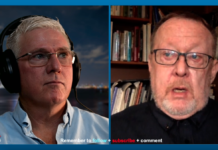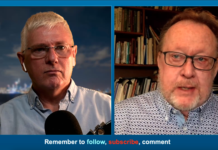NewsroomPlus.com – Contributed by Pukeko Research
Pūkeko Research has been pursuing an independent (unsponsored) study of inequality, education and society for two years.
“Among other things, we wanted to know how 25 years of ‘school choice’ had changed the schooling system in New Zealand”, said Liz Gordon, project sponsor.
Some findings from the study have been publicised over the past month, other were embargoed against publication in the New Zealand Journal of Educational Studies.
The first finding is that there is a large socio-economic effect that has led to high decile schools becoming larger, and low decile schools declining in size, over at least twenty years.
This effect is shown in the following graph, which shows the changes in the number of students in each decile between 1996 and 2014. Because the number of schools in each decile is roughly constant, changes in student numbers indicate average school size within the decile.
 This finding is consistent with every previous piece of research that has been done on school choice in New Zealand, which finds that parents make social/ economic rather than educational choices for their children. In short, the evidence is that parents choose ‘up’ for their children, to the extent that they can. This process of choosing ‘up’ over time has significantly unbalanced school size in New Zealand.
In 1998, the average school roll in decile 1 schools was just over half the size of decile 10 schools. By 2014, the average decile 10 school was over 2.5 times the size of decile 1. By 2020 the size difference will be approximately 3 times.
This has effects at both ends of the spectrum. For low decile schools, the constant loss of school numbers means that the per capita running costs of the school increase, as a school designed for higher numbers has to fund itself on less income.
As schools get smaller, there is a loss of teachers, which on the ground means real teachers with specific, needed skills and expertise lose their jobs. Also, low decile schools often look old and dilapidated, as new capital funding is inevitably directed at the areas of growth – high decile schools.
For high decile schools, the effect described here means they are often bursting at the seams, with too few classrooms, too few facilities, reduced outdoor areas and new staff coming in all the time. These schools may be relatively cash rich because of economies of scale, but face a wide range of demands from the public for places.
One of the interesting research questions is whether the move to school choice has improved our overall school outcomes: are we a better educated country as a result? While New Zealand students are becoming increasingly credentialled, with rates of senior school passes rising each year, our overall performance on international measures such as the OECD’s PISA has been declining slowly since the 1990s, as have the results in other ‘school choice’ countries.
The other interesting question is whether the effort that parents go to in choosing schools, transporting their children and supporting them often at quite distant schools leads to better outcomes for the children. There is currently no research evidence in New Zealand on the effects of choice on individuals.
The second finding is that school choice has led to a massive loss of pākehā children from low-decile schools: a process often known as white flight.
In 1996, pākehā students made up 39% of decile 1-5 students, but by 2013 this had declined to 25%. Only half a percent of pākehā students attend decile 1 schools. This process, from a pākehā perspective, is outlined in the figure below.
Between 1996 and 2013, the process of social choice of schooling has progressively seen pākehā students attending higher decile schools. Three quarters of pākehā students now attend decile 6-10 schools. This large shift is the primary reason that low decile schools are becoming smaller.
This finding is consistent with every previous piece of research that has been done on school choice in New Zealand, which finds that parents make social/ economic rather than educational choices for their children. In short, the evidence is that parents choose ‘up’ for their children, to the extent that they can. This process of choosing ‘up’ over time has significantly unbalanced school size in New Zealand.
In 1998, the average school roll in decile 1 schools was just over half the size of decile 10 schools. By 2014, the average decile 10 school was over 2.5 times the size of decile 1. By 2020 the size difference will be approximately 3 times.
This has effects at both ends of the spectrum. For low decile schools, the constant loss of school numbers means that the per capita running costs of the school increase, as a school designed for higher numbers has to fund itself on less income.
As schools get smaller, there is a loss of teachers, which on the ground means real teachers with specific, needed skills and expertise lose their jobs. Also, low decile schools often look old and dilapidated, as new capital funding is inevitably directed at the areas of growth – high decile schools.
For high decile schools, the effect described here means they are often bursting at the seams, with too few classrooms, too few facilities, reduced outdoor areas and new staff coming in all the time. These schools may be relatively cash rich because of economies of scale, but face a wide range of demands from the public for places.
One of the interesting research questions is whether the move to school choice has improved our overall school outcomes: are we a better educated country as a result? While New Zealand students are becoming increasingly credentialled, with rates of senior school passes rising each year, our overall performance on international measures such as the OECD’s PISA has been declining slowly since the 1990s, as have the results in other ‘school choice’ countries.
The other interesting question is whether the effort that parents go to in choosing schools, transporting their children and supporting them often at quite distant schools leads to better outcomes for the children. There is currently no research evidence in New Zealand on the effects of choice on individuals.
The second finding is that school choice has led to a massive loss of pākehā children from low-decile schools: a process often known as white flight.
In 1996, pākehā students made up 39% of decile 1-5 students, but by 2013 this had declined to 25%. Only half a percent of pākehā students attend decile 1 schools. This process, from a pākehā perspective, is outlined in the figure below.
Between 1996 and 2013, the process of social choice of schooling has progressively seen pākehā students attending higher decile schools. Three quarters of pākehā students now attend decile 6-10 schools. This large shift is the primary reason that low decile schools are becoming smaller.
 Apart from the points made above about the effects on size of schools and worsening outcomes, this large shift in pākehā attendance has significant implications for racial segmentation. New Zealand is a bicultural and increasingly multicultural society, but our high decile schools are almost bastions of whiteness.
Decile one schools, which serve populations living below the poverty line (as do decile, 2, 3 and 4 schools), are 90% Māori and Pasifika in make-up. The worry is that the high level of educational segmentation will lead to social conflict over time. Could the Emanuel Church shooting occur at a Pasifika church in New Zealand? It is unlikely, but not out of the question where social segmentation is embedded.
NOTE ON THE PROJECT:
This is an ongoing project. It is based primarily on understanding the government’s own figures as published on the Education Counts website, and examining the implications. When some of the figures were released last month, the reporter was told that the figures were wrong. Pūkeko Research produced the workings to show that the only figures used were their own, and was eventually conceded that the figures were correct. However, the time taken to argue the correctness of the figures meant that the Ministry and Minister never got around to commenting on the implications of the findings, and they have not done so to this date.
Published this month:
Apart from the points made above about the effects on size of schools and worsening outcomes, this large shift in pākehā attendance has significant implications for racial segmentation. New Zealand is a bicultural and increasingly multicultural society, but our high decile schools are almost bastions of whiteness.
Decile one schools, which serve populations living below the poverty line (as do decile, 2, 3 and 4 schools), are 90% Māori and Pasifika in make-up. The worry is that the high level of educational segmentation will lead to social conflict over time. Could the Emanuel Church shooting occur at a Pasifika church in New Zealand? It is unlikely, but not out of the question where social segmentation is embedded.
NOTE ON THE PROJECT:
This is an ongoing project. It is based primarily on understanding the government’s own figures as published on the Education Counts website, and examining the implications. When some of the figures were released last month, the reporter was told that the figures were wrong. Pūkeko Research produced the workings to show that the only figures used were their own, and was eventually conceded that the figures were correct. However, the time taken to argue the correctness of the figures meant that the Ministry and Minister never got around to commenting on the implications of the findings, and they have not done so to this date.
Published this month:
- Gordon, Liz (2015) ‘Rich’ and ‘poor’ schools revisited. New Zealand Journal of Educational Studies, 50, 1.







